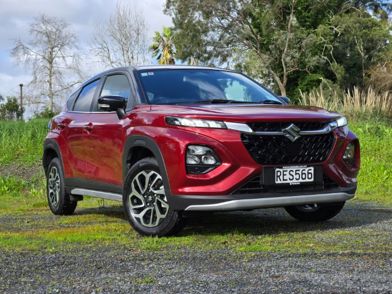Transport Minister Michael Wood has responded to the Motor Industry Association's claim that the Land Transport (Clean Vehicle) Amendment Bill currently in parliament is a revenue gathering exercise that shows little understanding of how vehicles are sourced, or the current global emissions-testing landscape.
The MIA, which represents New Zealand's new-vehicle distributors, has withdrawn its support for the proposed Clean Car Standard. It accuses the Government of failing to listen to the local industry, setting targets that few brands can meet without reliance on Battery Electric Vehicles (BEVs) and therefore dramatically ramping up the cost of most new vehicles for consumers.

The MIA also says the Government is confused about WLTP fuel-economy testing, which it has stipulated must apply to all vehicles from January 2022. WLTP is required for the latest Euro 6(d) regulations but not required for Australia, which is the true source specification/standards for NZ-market vehicles - even if they are made in Europe or Japan.
MIA chief executive David Crawford (above left) and Minister Wood (above, centre) appeared together on a DRIVEN Clean Car discussion panel earlier this year, at NZME's Auckland premises.
Minister Wood has reiterated that he will continue to work with the MIA through the Clean Car Leadership Group, but also questions whether this a new stance: "I’m sure they will engage constructively through the select committee process as well, although my understanding is they’ve never supported the Standard’s targets, so it’s surprising they are saying they are withdrawing support."
Wood denies that the targets are impossible: "The New Zealand 2025 target has already been met in some other jurisdictions like Japan and the EU, so we know it’s achievable. The Clean Car Import Standard applies to the fleet importers bring in annually and it’s the average emissions of that fleet that’s measured. We have made adjustments to the Clean Car Import Standard to help the industry shift gears and they’ll be given flexibility by allowing them to bank, borrow and transfer achievement of the annual targets.
"In terms of the longer term targets (2026/7), we’ve provided them to give the industry 5-6 years so they have more time to undertake the changes necessary to the fleet mix to decarbonise our economy and meet our climate obligations. It’s not correct to say they can only be met by suppliers that exclusively sell EVs. It does however rely on suppliers have an increasing proportion of EVs, or, if they don’t, trading credits with those that do. We have already seen an increase in the range of low emissions vehicles being offered and promoted in New Zealand in the first few months of the Clean Car Discount and I expect this will continue.
"It’s important to note that countries like the UK and Norway are banning the sale of petrol and diesel vehicles between 2025 and 2030, so we have to move quickly to stop us becoming a dumping ground for the world’s dirtiest cars."
Wood says he has been given "recent advice" on the topic of WLTP and will respond to the MIA shortly.



